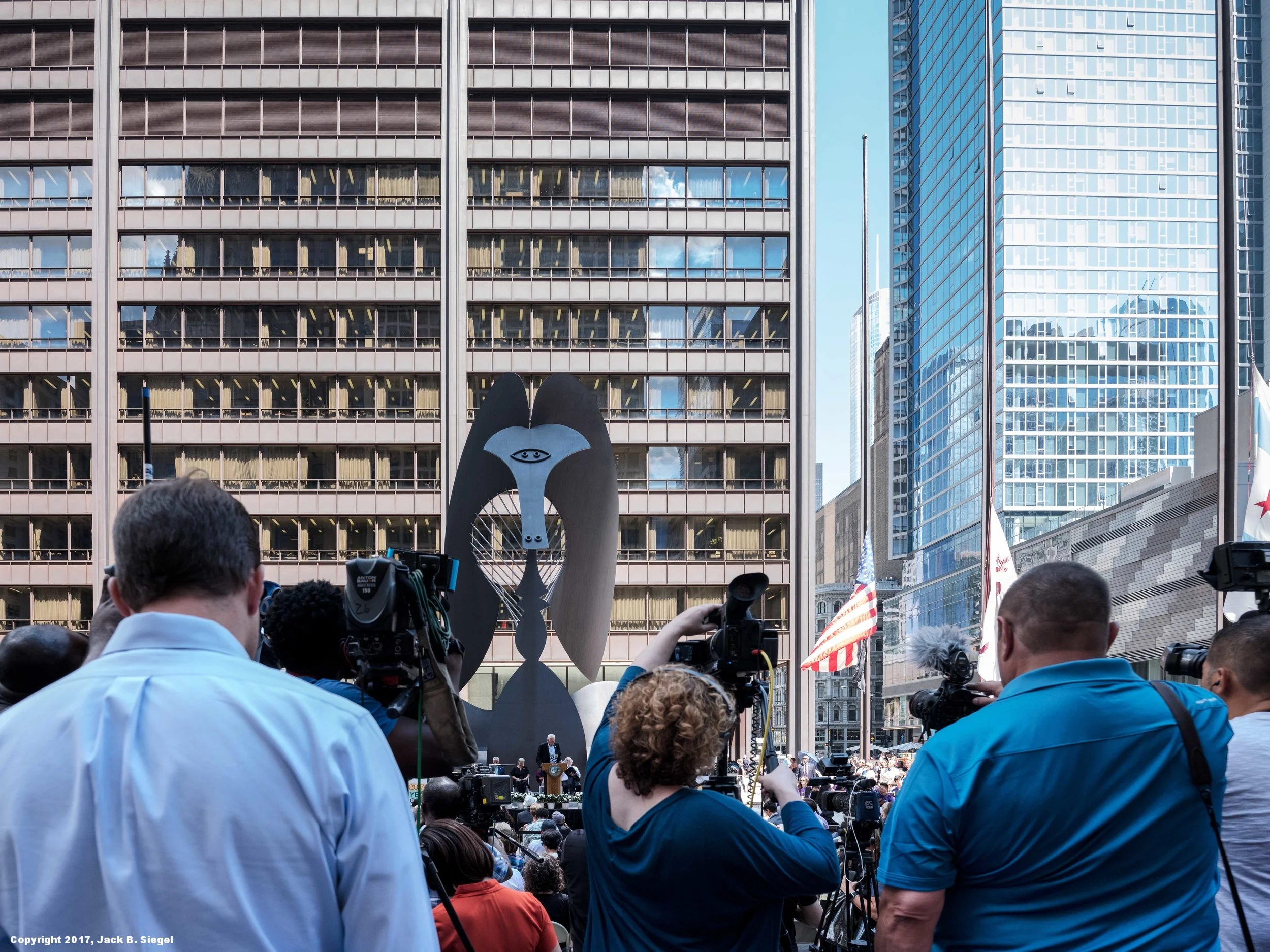Power
“I am the poor white, fooled and pushed apart,
I am the Negro bearing slavery’s scars.
I am the red man driven from the land,
I am the immigrant clutching the hope I seek—
And finding only the same old stupid plan
Of dog eat dog, of mighty crush the weak.”
In 1918, future poet Langton Hughes arrived in Chicago from the South. Deciding to explore the city on his first Sunday in Chicago, Hughes, then in high school, headed west from Bronzeville, crossing Wentworth Avenue, which was the dividing line between Black Chicago to the east and White Chicago to west. Hughes had made a big mistake, as his black eyes and swollen jaw demonstrated. A white street gang (possibly members of the Hamburg Athletic Club) had administered a severe beating in an effort to protect their turf.
Mayor Richard J. Daley always avoided question as to whether he was involved in the Hamburg Athletic Club’s darker activities, but in 1924, he became its president at age 22. In one sense, Hughes got off lightly. In 1919, Eugene Williams, a black teenager, drifted into a Whites-only swimming area near 29th Street. Although there is some debate, Williams is said to have died when a white man threw a rock at Williams. The incident sparked a race riot that lasted for several days, with 38 people dying and hundreds of others sustaining injuries. Once again, fingers point in the direction of several Bridgeport gangs, including members of the Hamburg Athletic Club.
As time went on, the residents of Bridgeport and their local representatives tried to keep the dividing line between black and white clear and hard. When he became mayor, Daley used concrete and cement to further harden the lines. Daley was the political architect behind the 16-lane Dan Ryan expressway, which at one time was purported to be the widest expressway in the world—China has probably built an expressway that now surpasses it. The Dan Ryan’s southbound route tracked neighborhood dividing lines, assuring that blacks would remain on one side and whites on the other.
With that background, I found my walk through Bridgeport to be an interesting experience. I purposely set out in search of Mayor Daley’s former home at 3536 South Lowe Avenue. Daley may have moved upward in civic standing during his lifetime, but he was stationary in terms of living arrangements. His parents brought him back to 3502 South Lowe Avenue following his birth on May 15, 1902. He resided on that block his entire life.
The home that Daley occupied as an adult has features similar to Daley’s own: It is broad in the beam, low in height, and well-maintained, but otherwise nondescript. It is surprisingly large for a bungalow, which is due to its depth. It appears to also occupy the lot behind the front lot, but that space may have once functioned as the backyard.
As I walked around Bridgeport, I sensed that I was walking in Daley’s footsteps. On Halsted, I saw the Ramova Cinema, which is a classic theatre from bygone days. It is clearly closed, and the scaffolding out front made me wonder whether it is long for this world. I could imagine Daley and his wife, Sis, walking the four blocks from their home to the theatre to see The Ten Commandments, On the Waterfront, or Ben-Hur, and then stopping at the Bridgeport Diner for coffee or a soda.
I also encountered the Daley Insurance Agency. I suspect that it is or was owned by a Daley-family member.
Heading east, i went under the viaduct supporting the railroad tracks crossing 35th Street. Comiskey Park was once located just east of those tracks. It outlasted Mayor Daley by 15 or so years. Its replacement, Guaranteed Rate Field, is in the same location and is home to the White Sox. Along the way, I encountered two hot dog stands, which I could envision a young Richard J. Daley and his friends grabbing a bite before or after a Sox game.
The lawns on Daley’s and surrounding blocks are well-manicured, and the homes are well-maintained. A woman one or two houses down from the former Daley home was washing a vintage car parked on the street.
At the end of Daley’s block there is a small police and fire station. Turns out both are located there not by accident. The Mayor had them built after he assumed power.
And yet, Bridgeport has changed since the days Daley returned there nightly from city hall. There are vacant lots that were once occupied by homes and small businesses. Sitting next to me at one hot dog stand were two Latin-American women and a small child. I saw African-American teenagers riding their bikes through the neighborhood. I also saw a mixed-race group of teenagers playing softball in one of the empty parking lots surrounding Gateway Field. Further north on Halsted, there was strong evidence of Asian-Americans, both in terms of people on the street and storefront signage.
The Bridgeport that Mayor Daley knew is largely intact physically, but there is visible erosion in its physical plant. Mayor Daley, however, would be shocked by the changes in its ethnic makeup.
[Click on an Image to Enlarge it]
The Police and Fire Station on the Same Block as the Former Richard J. Daley Home
The Ramova Theatre on Halsted (Defunct)
An Empty Lot Across from the Ramova Theatre
Are Bridgeport’s Fortune’s Up or Down?
Something You Don’t See Everyday These Days
Vienna Beef Stand with Seats from Comiskey Park
Home of the White Sox
Daley, Obama, Daley, and the White Sox Mascot
The Chicago Youth Center
The Fisk Generating Station (Defunct) on the Border of Bridgeport and Pilsen
On the Way to Bridgeport





